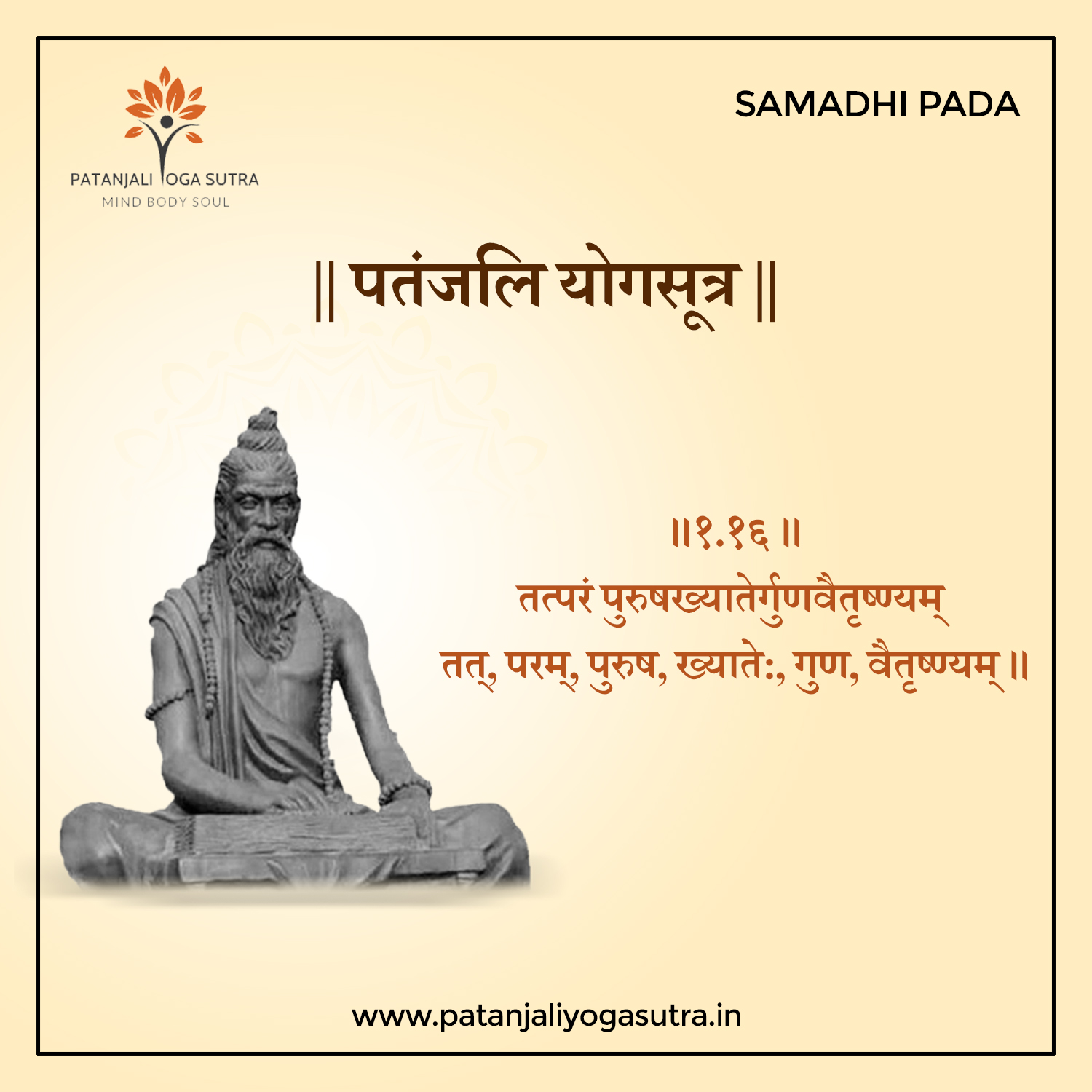



इससे पहले हमने जिस वैराग्य की चर्चा की थी वह अपर वैराग्य था, इससे भी उत्कृष्ट और ऊँचा पर वैराग्य है जिसमें साधक स्वयं को साक्षात्कार कर लेने के बाद त्रिगुणातीत अर्थात गुण मात्र से तृष्णा रहित हो जाता है | यह अत्यंत ऊँची स्थिति है जिसके विषय में बात करना और उस स्थिति की “वस्तु स्थिति” बताना अत्यंत दुष्कर है |
गुण क्या हैं?- गुण तीन प्रकार के होते हैं |
पर वैराग्य इन तीन गुणों से भी पार जाने का नाम है | जहाँ साधक केवल चिन्मात्र रह जाता है | ज्ञान्मात्र रह जाता है | व्यास भाष्य में ज्ञान की पराकाष्ठा को ही पर वैराग्य कहा गया है| इसे ज्ञान की पराकाष्ठा इसलिए कहते हैं क्योंकि साधक अनुभव करता है कि मुझ आत्मस्वरूप के अतिरिक्त जो कुछ भी मुझे अनुभव में आ रहा है वह उपधिमात्र है अर्थात बाहर से आया हुआ है इसलिए स्वयं के अतिरिक्त वह सबकुछ से विरक्त हो जाता है | ऐसा कह सकते हैं कि जीवात्मा का साक्षात्कार हो जाने से केवल स्वयं से उसका ज्ञानपूर्वक राग हो जाता है और जो कुछ जीवात्मा से बाहर का है उससे वह वैराग्य को प्राप्त हो जाता है|
स्वयं के विषय में विचार करना यह सबसे बड़ा अक्लिष्ट विचार है इसलिए अभ्यास और वैराग्य इस विचार को नहीं हटाता अपितु इसे और अधिक सशक्त करता जाता है क्योंकि इससे अभ्यास और वैराग्य और दृढ होते हैं |
What we had discussed earlier was Apara vairagya. Para/Supreme vairagya is even better and is the highest level of vairagya in which on account of awareness of the Purusa, there is cessation of the least desires for Gunas. This is the highest kind of vairagya about which it is very difficult to talk.
What is Guna? There are of three types of Gunas:
But vairagya is going beyond these three Gunas where the meditator is in deep concentration and attains wisdom. In Vyas commentary highest knowledge is called vairagya. The seeker realizes that except the inner spirit, every experience is just an external title. Therefore, he is detached from everything out of spirit.
To think of self is the greatest akalisht. That is why practice and detachment not only remove this thought but further strengthen this belief as it makes practice and detachment more unshakeable.
सूत्र: तत्परं पुरुषख्यातेर्गुणवैतृष्ण्यम्
वैराग्य के भी दो भाग बतलाए
पर और अपर ये दो विभाग बतलाए
पूर्व सूत्र में जो कुछ कहा है
अपर वैराग्य उसका नाम धरा है
सत्व, रजस और तमस जो गुण हैं
तीनों परस्पर अत्यंत विगुण हैं
योगी जब इनसे भी विरक्त हो जाता
“पर” वैराग्य वह नाम कहलाता ।